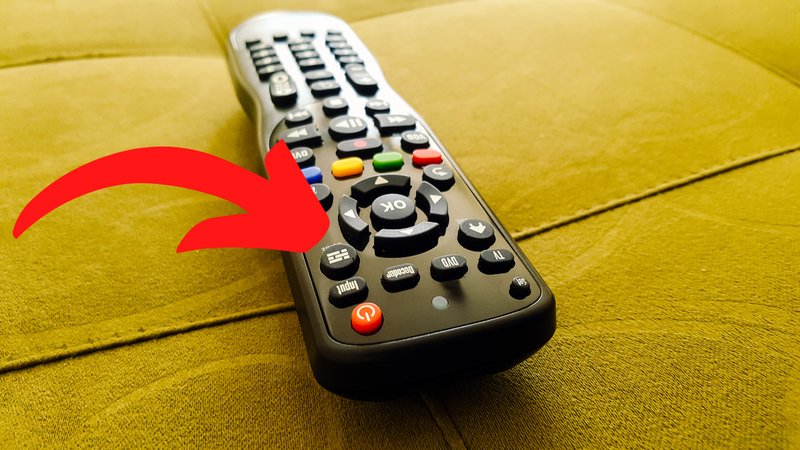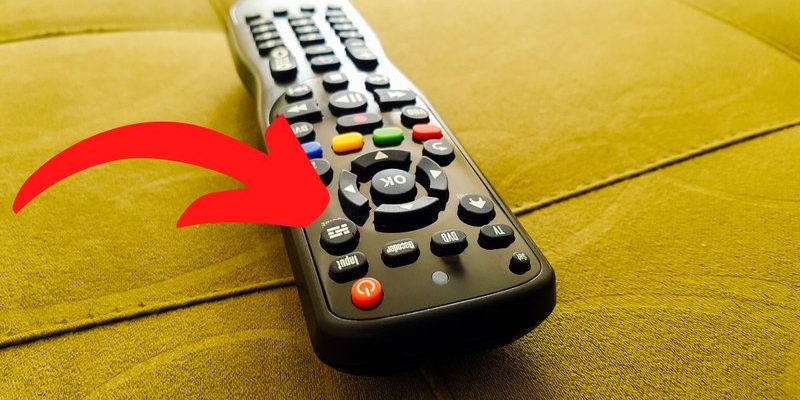
Here’s where One For All universal remotes pop up as a popular option. They’re pitched as a do-it-all solution, covering everything from your old DVD player to the latest smart TVs. But, like most “universal” gadgets, there are some caveats. Compatibility isn’t always as smooth as the box would have you believe. I’ve been there—squinting at codes, trying endless sync options, and wondering if I’ve bought a remote that’s smarter than me. So, let’s unpack what’s actually compatible, how these remotes play with smart TVs, and the little gotchas that could trip you up.
What is a One For All Universal Remote, Anyway?
Think of One For All as the Swiss Army knife of remotes. Instead of juggling a separate remote for each gadget, you grab just one—program it, and now it’s in charge like a tiny general. The company has built a reputation for making these universal remotes that promise to control TVs, soundbars, streaming boxes, and more.
But here’s the thing: “universal” doesn’t mean “magically perfect.” It’s more like a translator between your couch potato wishes and your devices. One For All remotes come loaded with thousands of codes—basically secret handshakes that let them talk to everything from Samsung and LG to less famous brands. Most newer models even promise compatibility with smart TVs, which run on different systems (think webOS, Tizen, Android TV, Roku, and so on).
You might be wondering—do I need technical skills or a PhD in patience to use one? Honestly, if you can follow a recipe or plug in a phone charger, you can handle this. But there are some quirks. Depending on your TV, sometimes you’ll nail it on the first try. Sometimes you’ll be scrolling through setup instructions wondering about your life choices. But the reward—one remote to rule them all—is worth it.
How Do One For All Universal Remotes Work With Smart TVs?
Okay, so you’ve got your new smart TV. It probably came with a slick, brand-specific remote with voice control, touch pads, maybe even a little microphone. Now, can a One For All universal remote step in and do the job? The short answer: usually yes, but sometimes with a few trade-offs.
Here’s how it works. Universal remotes like these send infrared (IR) signals, which is old-school but super reliable. Many smart TVs—brands like Samsung, LG, Sony, Hisense—still have IR receivers, so they’re fair game. You simply *code* or *sync* your One For All remote by entering a code (found in the manual or online) or by letting it auto-search for the right one. Once paired, most of your basic TV functions (power, volume, input, navigation) should work right out of the box.
But let me explain what might be missing: some smart TV features use Bluetooth or Wi-Fi. This means advanced stuff like voice search, air mouse, or instant app launching may not work on a universal remote, unless you’re using one of their advanced models. So, if you just want to flip through Netflix or change the volume, you’re golden. If you’re hoping for flawless smart integrations, you might hit a wall.
Honestly, I’ve run into this exact scenario: I had a friend whose smart TV remote died, and while the One For All remote did almost everything, we couldn’t summon Alexa by shouting at the remote. But for movie nights, switching HDMI ports, and basic controls, it worked like a charm.
Setting Up Your One For All Remote: Pairing, Codes, and Sync
Here’s the part where most people get a little nervous. The setup process for a One For All universal remote sounds intimidating, but in reality, it’s way less complicated than assembling IKEA furniture (and there are fewer pieces missing).
Step one: Install the batteries. Sounds obvious, but trust me, dead batteries cause more troubleshooting headaches than you’d believe.
Next, you’ll need to find the right TV code. One For All provides a thick little booklet or a quick web tool where you enter your TV brand and model. Some smart TVs use codes shared with their brand’s regular TVs, and sometimes there are separate ones for smart features.
You can either:
- Manually enter the code using the remote’s number pad
- Use “auto-search,” which cycles through codes until your TV responds
Once you’ve paired it, test every button. Something not working? Try another code. Sometimes there are multiple codes for a single brand, so don’t panic if the first attempt fizzles out. For features like volume or input switching, you should get instant feedback.
Pro tip: If you ever want to reset everything and start fresh, most One For All remotes let you do a “factory reset.” Just check the manual for the button combo.
It can feel a bit like safecracking. But stick with it! Eventually, you’ll hit the sweet spot where the remote just works and you forget you ever owned five separate remotes.
Compatibility: Which Smart TVs Play Nice With One For All?
This is probably the burning question: does One For All actually work with your smart TV? Here’s the straight answer: for most major brands, compatibility is solid. But let’s get specific.
If your TV is made by one of the big names—Samsung, LG, Sony, Panasonic, Philips, TCL, Hisense—you’re good. These brands use standard infrared codes that the One For All remotes have baked in. If your TV runs on Android TV, webOS, Tizen, or Roku OS, you’re also usually fine for basic operations.
But things get trickier with:
- Brand new models just out this year (sometimes codes lag behind releases)
- Very old or obscure brands
- Streaming “stick” devices like Roku Stick or Amazon Fire TV Stick, which use Bluetooth or Wi-Fi for their main remote functions
One For All updates their code lists pretty regularly, but if your TV is rare or super-new, it never hurts to double-check their site for the latest compatibility info. If you’re stuck, their customer support is actually pretty responsive and can usually point you in the right direction.
Some smart features—like opening apps directly or using a microphone—might not work, unless you shell out for a smart universal remote with Bluetooth or Wi-Fi. But for classics like power, volume, channel, and navigation, these remotes are impressively flexible.
What About Sync Issues, Troubleshooting, and Resetting?
Let’s be honest—sometimes you do everything right, and the remote still acts like it’s haunted. Maybe one button won’t work, or the remote keeps forgetting your TV each time you swap a battery.
The most common problems happen right at the beginning: if the remote doesn’t respond, double-check the code and make sure the batteries aren’t flat. A weak battery can cause the remote to act flaky, like missing commands or not turning the TV on at all.
If you’re stuck on pairing, try the auto-search mode again. Sometimes the remote needs a second look at the code list. And if you’re running into more exotic issues—like only some buttons working—try a different code for the same brand. TV brands sometimes change their code sets across models and years.
Don’t forget: If you just can’t make it work, a factory reset (holding specific buttons for a few seconds) will clear out all settings and let you start over with a clean slate.
And here’s a little story: last year, my One For All remote suddenly stopped working with Netflix on my friend’s Sony TV after a mysterious update. Turns out, Sony changed some code handling, so I had to re-sync the remote with a new code from the updated list. It was annoying, but at least I didn’t have to buy a new remote.
One For All Universal Remotes vs. Original Smart TV Remotes
Let’s do a little comparison. The remote that came with your smart TV is like a hand-tailored suit. It fits perfectly, has all the bells and whistles, and—let’s face it—sometimes costs a fortune to replace. One For All remotes are more like a well-made tracksuit: maybe not quite as fancy, but totally comfortable and gets the job done.
Why bother with a universal remote if you’ve got the original? A few reasons:
- The original remote is lost, broken, or chewed up by the dog (yes, that’s happened to me)
- You want to control multiple devices—TV, sound system, Blu-ray—without getting up
- Your family members always lose remotes and you’re tired of hunting
But, you might miss out on a couple of things: dedicated Netflix/YouTube buttons, pointer controls, or built-in voice assistants. Universal remotes cover all the basics, and some premium models have extra features. Still, if you’re a power user who loves smart integrations, think carefully before ditching that fancy original remote.
Battery Life, Maintenance, and Everyday Use
Let me be real: batteries are the Achilles’ heel of every remote, universal or not. One For All remotes mostly use AAA or AA batteries, which last anywhere from six months to a year depending on how often you channel-surf or binge-watch. And yes, low batteries can mean weird glitchy behavior, like the remote only working when you press buttons really hard. (Been there, mashed that.)
General maintenance? Super simple. Clean the buttons occasionally (you’d be shocked what gathers under there!), and swap batteries before they’re totally dead. If you’re using the remote with multiple devices, sometimes it’ll “forget” a device if you take too long to replace the batteries. Most models remember their codes, but every once in a while, you might have to re-sync or enter the code again.
Honestly, it’s way less hassle than keeping track of six different remotes, each with their own battery quirks and hiding places.
Alternatives to One For All Universal Remotes
If you’re still not sold, here’s the lay of the land. There are other universal remotes out there—Logitech Harmony, GE, RCA, and some off-brand options. Harmony remotes are a premium choice, offering fancier smart integrations but usually with a steeper price tag (and, frustratingly, Logitech has discontinued the line). Others like GE and RCA work similarly to One For All, relying on code lists and IR.
The main question: do you want cheap and reliable, or do you want every smart feature under the sun? In my experience, One For All finds the sweet spot—affordable, super easy to set up, and covers most people’s needs without turning your living room into Silicon Valley. But if you have a super-advanced home theater or absolutely need voice control, you may want to research smart remote hubs or even smartphone remote apps.
Wrapping Up: Does One For All Actually Work With Smart TVs?
If your goal is to toss all those extra remotes into a drawer (or, hey, the trash), One For All universal remotes are a solid bet for most smart TV users. They’re simple to set up, surprisingly flexible, and handle the basics like a pro. Just remember—some super smart features might not cross over, and you’ll need to keep an eye out for battery hiccups and the odd code update.
At the end of the day, using a universal remote is like teaching a new puppy: a little patience pays off, and once everyone’s in sync, life gets dramatically easier. If you ask me, it’s worth the few minutes of setup for the peace of mind (and coffee table space) you’ll get in return.
